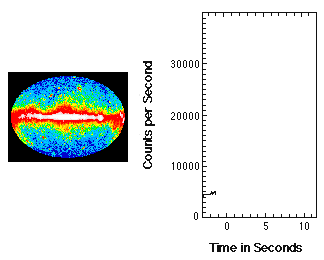
Gamma-ray bursts are one of the most energetic explosions in the universe. When a gamma-ray burst occurs, it is often the brightest source in the entire gamma-ray sky. Due to the extreme brightness, gamma-ray bursts are detected in a wide range of distances, from the local universe to the early universe. In fact, gamma-ray bursts are one of the very few events that can be seen directly out to the era when the first star was expected to form. Gamma-ray bursts are thus powerful tools to study the environment in the early universe, and how the universe has evolved to its current stage.
Gamma-ray bursts are usually classified into two groups, short and long, based on their burst durations, with the separation of about two seconds. Both the theoretical and observational evidence suggest that long gamma-ray bursts originate from the collapse of massive stars, and thus are related to supernovae, while the short gamma-ray bursts are from the mergers of two neutron stars, or a neutron star and a black hole, and therefore also produce gravitational waves.









